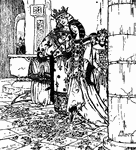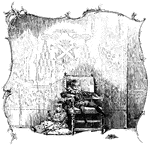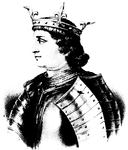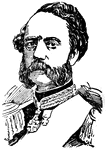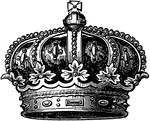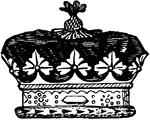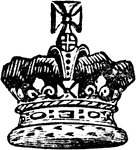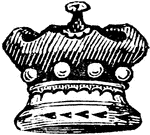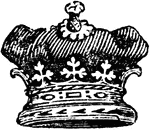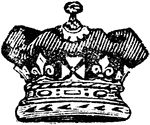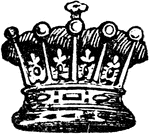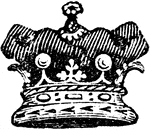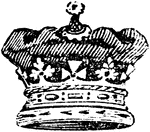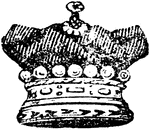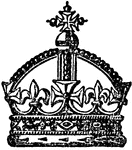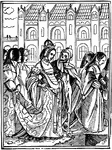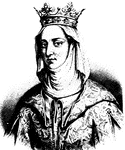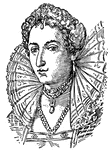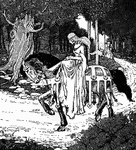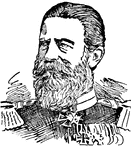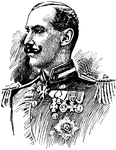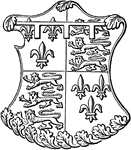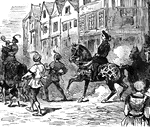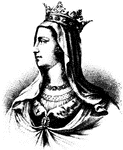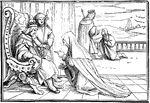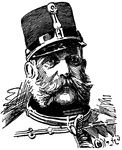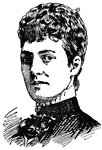
Queen Alexandra
(1844-1925) Consort of King Edward VII. She founded the Imperial Military Nursing Service and instituted…
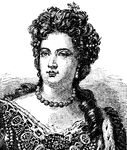
Queen Anne of Great Britain
Anne (6 February 1665 – 1 August 1714) became Queen of England, Scotland and Ireland on 8 March…

Assyrian Princess in Full Dress
In ancient Assyria, princes, princesses, and priests vied with each other in luxury.
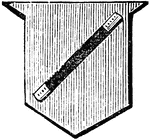
Shield Showing Baton
Argent, a fess, azure. The fess is formed by two horizontal lines drawn above and below the centre of…
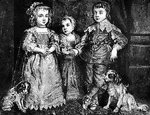
Death of Charles I
The King's trial (on charges of high treason and "other high crimes") began on January 2, but Charles…

Charles II of England
Charles II (Charles Stuart; 29 May 1630 – 6 February 1685) was the King of England, Scotland,…

Charles VI of France
Charles VI (1368 – 1422), called the Beloved and the Mad, was King of France from 1380 to his death.
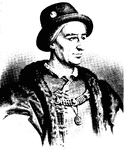
Charles VII of France
(1403-1461) King of France. During his reign , Joan of Arc led the troops and the war against Britain…
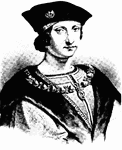
Charles VIII of France
Charles VIII, called the Affable, (1470 – 1498), was a monarch of the House of Valois who ruled as…

Crown
A wreath or garland, or any ornament encircling the head, especially as a badge of dignity or power.

Battle of Cunaxa
Battle fought between two brothers, Cyrus the Younger and Arsaces. Cyrus managed to collect eleven thousand…
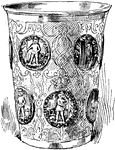
Medal Cup
An illustration of a "silver Medal-cup (The medals are all of the Duke of Brunswick-Wolfenbuttel.)"…

Diadem
"DIADEM, a circle of gold with points rising from it, worn by ancient kings as the token of royalty.…

Edward VI. Writing His Journal
Edward VI became King of England and Ireland on January 28, 1547, at just nine years of age. Edward,…

Albert Edward
Prince of Wales, Edward VII, was the King of the United Kingdom of Great Britain and Ireland, King of…
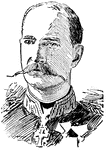
George I, King of Greece
George I (1845 – 1913) was King of Greece from 1863 until his death in 1913.
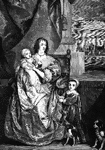
Henrietta Maria Queen of Charles I, with the Princes Charles and James
This painting is by Sir Anthony Van Dyck. It is one of at least twenty-five that the artist made of…

Queen Henrietta Maria
Queen Henrietta Maria was Queen Consort of England, Scotland and Ireland through her marriage to Charles…
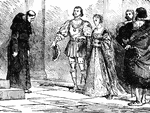
Henry the VIII and His Wives
Henry VIII was married six times during his life. First, to Catherine of Aragon, Anne Boleyn, Jane Seymor,…
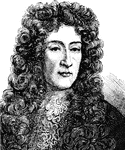
James II of England
James II of England and Ireland, James VII of Scotland (14 October 1633 – 16 September 1701) was…

King & Queen Dancing with Group of People
An illustration of a king and queen holding hands and dancing with a large group of people.

King Robert of Sicily
In Longfellow's poem, an angel took King Robert's place and made Robert the royal jester until he admitted…
